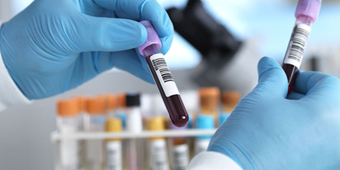- Cardiology And Vascular Health
- Health Topics
- Stroke
- Stroke And Other Vascular Diseases
- Stroke Prevention
- Stroke Treatment
Making the Most Of Life After Stroke

Answer a few questions and we'll provide you with a list of primary care providers that best fit your needs.
Your life after a stroke may change in small or large ways, depending on how much damage to the brain the stroke causes. Some people make a full recovery while others have long-term or lifelong disabilities.
Medical teams aim to get people back to the highest level of function possible, while at the same time preventing another stroke. After having a first stroke, women have a 24 percent chance of having another stroke within five years, says the National Stroke Association. For men, about 42 percent have another stroke. So, taking steps to prevent stroke recurrence is extremely important.
Neurointerventionalist Bryan Ludwig, MD, says, “Our stroke team needs to figure out why you had a stroke and how to prevent it in the future.” Dr. Ludwig explains how the stroke team assesses possible causes of stroke and works with patients to make needed changes to prevent another one.
Click play to watch the video or read video transcript.
Recovering From a Stroke
If you are working to recover full movement in your arms and/or legs, activities of daily living can help restore muscle strength and function. Challenge yourself, but also be patient with your progress and reward yourself for improvements you make.
Prevent fall risks by making changes in your home, such as removing loose rugs or installing hand railings in your bathroom. A doctor or therapist may recommend an assistive device such as a walker or cane to help you with balance.
For showering or bathing, install grab bars, a shower seat, a hand-held showerhead, or anything that will keep you from losing your balance and falling.
When you are getting dressed, sit down. If an arm is affected, wear shirts that pull easily over your head, and skirts or pants with elastic waistbands. A loop on a zipper pull tab also may make dressing easier.
After having a first stroke, women have a 24 percent chance of having another stroke within five years.
Lifestyle Changes To Prevent Future Strokes
Smart lifestyle choices will help give you the best odds for preventing another stroke.
- Take medications exactly as prescribed. Medicines to prevent clot formation, control high blood pressure, lower cholesterol, normalize heart rhythms, and control diabetes all help to lower risk for another stroke. Do not skip doses, change doses, or suddenly stop taking medicine without strict instructions from your doctor. Let your doctor know about any side effects you’re having. You may need routine blood tests to confirm that medicines are working as they should.
- Make changes in your diet. The food you eat has a direct impact on the health of your heart and blood vessels. A
heart-healthy diet protects you from stroke. Follow these guidelines to help prevent another stroke:
- Eat plenty of fruits and vegetables.
- Reduce fat, cholesterol, and salt.
- Choose lean proteins, such as fish, poultry, beans, and peas, and eat less red meat and processed meats.
- Consume low-fat dairy products.
- Limit vegetable and nut oils, sweets, and processed foods such as chips, cookies, and baked goods.
- Stay as active as possible. Discuss with your doctor or rehab team what you can do on your own to keep moving. It may be simple activities such as walking, gardening or performing household tasks. The more you are physically active, the healthier it is for your heart and blood vessels.
- Limit the alcohol you consume. American Heart Association guidelines suggest no more than one alcoholic drink per day for women, and no more than two drinks for men.
- Don’t smoke. If you smoke, stop immediately to prevent further damage to your heart and blood vessels. Ask your doctor about smoking cessation programs, medication, or other techniques to quit smoking.
- Manage your stress. Good stress management techniques will help keep your blood pressure under control.
Answer a few questions and we'll provide you with a list of primary care providers that best fit your needs.
Source: Bryan Ludwig, MD, The Clinical Neuroscience Institute; American Stroke Association; National Stroke Association; National Heart, Lung, and Blood Institute






